Free Tropical Runtz seeds on orders over $150!
The selective light training (SLT) approach is intended for intermediate to expert growers who are curious about learning the newest growth techniques and enjoy getting their hands dirty with some experimentation – it is not intended for novice growers. Cannabis plants generally have over 1,000 light-sensitive proteins, with the phot1 and phot2 phototropins being the most likely to be modified with blue and minus blue light. Since blue encourages plant cells to contract, exposing the stem to blue spectrum light results in a more compact plant. However, reducing blue light might have the opposite impact. It can cause plant cells in the leaves and stems to increase dramatically. Here is all you need to understand about how cannabis selective light training technique can aid you in growing your plants effectively.
SLT (selective light training) involves shining light on certain sections of a cannabis plant in order to manipulate light sensitive proteins and their cascade effects via signal transduction pathways. A normal plant has over 1,000 light sensitive plant proteins – the phototropin proteins (phot1 and phot2) are most likely regulated by blue light. Blue causes cannabis plant cells to not extend (as much), resulting in a more compact plant when touched with blue light. Plant cells like those found in leaves may rapidly expand without blue light. The problem is that a minus blue only light source can cause significant stem elongation, and some crops, such as sweet basil, might not grow at all.
The selective light training technique can be utilized with any off-light source for any purpose, like genetically modified organism research, bonsai trees, protein research, industrial-scale agriculture for early-stage plant development, such as apple, citrus, coffee, tea tree nurseries, and so on. SLT only requires to be administered in the early stages of a cannabis plant’s life to get the benefits of early-stage stem elongation reduction (on an industrial scale). This has enabled the adoption of more productive rootstocks or research on maize types that, of course, would not be utilized in the field but rather to study the protein signal transduction pathways involved in improving its development.
To use on cannabis stems, position the blue LED array close to the stem and provide continuous light. That is why 2055-degree oval LEDs are recommended. The 20-degree side-to-side aiming slop and the 55-degree vertical provide little overlap. By connecting three in series with a 330-ohm resistor and constructing a linear array, you may use an unregulated 12-volt power source. All of this is done to reduce expenses. According to experts, no one has ever seen one of these blue LEDs burn out at a lower power level. A close-up of the light sticks is shown on the left, and an even closer view of the epoxy encapsulation is shown below. These light sticks are easy to make (for personal use only, legal of course). Other wavelengths of light can be employed on different areas of the plant, with blue light blasting only the stem.
Not all cannabis plants react the same way, and the findings appear to be strain-dependent (sweet basil, lettuce leaf basil, and purple basil respond differently). As a result of selective light training, the Mystery Skunk cannabis plant produces 4-5 internodes per inch. A Mystery Skunk plant will provide 4-5 internodes per inch, even at reduced primary lighting levels. Excess stem elongation is no longer an issue, and you can expect substantially higher growth per area or volume. Use light sticks solely for veg development and the first two weeks of flowering on short-day plants.
For example, consider a Purple Arrow strain that has undergone selective illumination training (this is a low-yielding strain). This plant was not topped and demonstrated how various strains could produce morphological variances. The blue light on the stem produces narrower plants, but you must test the strain to see how well SLT works for that strain. Again, intracanopy illumination allows for more plants per area and higher production. Intracanopy sunlight frequently necessitates foliar nitrogen feeding and will result in a higher heat load and increased humidity due to the enhanced photosynthesis rate. You cannot accomplish this only through the use of blue side illumination. Blue side lighting blocks light from reaching the stem, causing the leaves to grow downwards. You must deliver the blue light near to the stem, which distinguishes side lighting, intracanopy lighting, and selective light training.
According to the pressure-flow concept, the sugars produced by the lower leaves through photosynthesis from reduced illumination are transferred through the phloem to where there is a lot of new growth (sink), cannabis flowers in this example. Because of the cellular respiration required to keep leaves alive, they become a sugar sink rather than a sugar supply if they fall below their compensation threshold. Use intracanopy illumination to get higher yields per square foot than would otherwise be achievable. Use SLT to increase intracanopy illumination efficiency by bringing the lower cannabis leaves closer together.
Cannabis plants can utilize green light because green is more photosynthetically efficient at greater light levels than red light. This is because of the saturation of the top layer of chloroplasts holding chlorophyll, enabling green to penetrate deeper into leaf tissue and be reflected around until absorbed by another chloroplast having chlorophyll. The fluorescence of chlorophyll might be used to evaluate this effectiveness.

When used alone, green light causes a lot of elongation. Cannabis HPS grow lights emit abundant green, yellow, or amber light. Green LED “safe light” can be used since the two main protein groups involved in photoperiodism control, crytochrome, and phytochrome proteins, are mostly indifferent to green light. This has nothing to do with cannabis plant photosynthesis. Many other proteins are involved in photoperiodism and cannabis blooming.
Cannabis producers can measure light intensity using a light meter. The intensity of light has a large impact on photosynthetic rates. The rate of photosynthesis mostly determines your yields. To a certain extent, greater light equals more yield or harvest. A light meter measures the amount of light, not the spectrum. This is close to the results we desire with an inexpensive lux light meter recorded at the top of the plant canopy height for everything except LED grow lights:
This establishes how far away the light source should be from the plant. You shouldn’t just aim to bring the cannabis plant near the light as possible without burning it. There are too many different kinds of lighting and far too many other considerations to apply that as a general guideline. For example, blowing air on the light and plant will allow you to bring the cannabis plant closer to the light without burning it, but you can exceed the 75000 lux limit in the process. Because you’re now saturating the plant, that’s just a waste of energy. However, choose the 35000-40000 lux level for the greatest yields per lighting level.
This info is not utilized to decide the type of light that you use. For example, growers normally choose redder lights with lower color temperatures for blooming and bluer lights with higher color temperatures for vegetative development. A light meter with the sensor or meter pointing straight up rather than right at the grow light source is ideal. This is compensated for by the grow light meter’s little white semi-sphere or flat plastic pieces. The key takeaway is that a lux meter is precise enough to offer significant data with white illumination.
Note: When growing cannabis, a lux meter measures the intensity of your grow lights in relation to their distance from your cannabis plant. So, using a lux meter, you can see if your plant is getting enough light or if the light is positioned correctly for the best results.
Here are different cannabis light colors that affect your plants’ development:
Blue light has a substantial impact on the production of chlorophyll, which helps plants absorb light. This light is most effective during vegetative development, encouraging the plant to create more leaves and grow higher. It also stimulates stem cells to grow longer stems. However, blue light might be harmful to your plant. When a cannabis plant germinates, it grows and generates roots, branches, leaves, and flowers. When you utilize blue light during the germination period, it might hinder plant development. This is because blue light interferes with the phytochrome, the cannabis plant’s normal reaction to light. When the phytochrome is damaged by the blue light, it doesn’t react properly: thus, the cannabis seed cannot germinate.
The wavelength of light used by most cannabis plants to generate their own energy is red light, namely 660nm. This indicates that the more red light a plant receives, the faster it grows. Red light is essential for cannabis germination and blooming. The addition of red light promotes blooming and budding. Many producers raise the intensity of their red lights when a cannabis plant is ready to bloom or bud. Conversely, excessive red light can cause your cannabis plants to stretch and grow tall, leading to lower yields and unsteady, elongated plants. To avoid this, grow indoors with a constant light cycle of 16/8 hours of light and darkness daily.
Green light has been shown to have a good effect on cannabis development since it does not disrupt the plant’s night cycle by simulating moonlight. However, green light has a negligible effect on plant growth and development. Green wavelengths have been found to be less significant than blue or red light absorption by chlorophyll. Green light, while not crucial, nonetheless influences plant design and photosynthesis.
The cannabis life cycle is categorized into four phases: germination, seedling, vegetative, and blooming (just in that order). Each phase of the cannabis development cycle is vital to the overall viability of your crop. Furthermore, different spectrum hues perform significant functions in the development and maturity of cannabis plants. As a result, considering the spectrum of light hues is critical, as their impacts on plant development vary depending on environmental conditions.
Knowing what your cannabis demands at each step will allow you to select the best grow light spectrum for each stage. Throughout the vegetative period of cannabis plants, the blue light spectrum between 400-500 nm is optimum. Plants get the signal to generate tough, wide leaves at 460 nm. Red light with a wavelength of 620 to 740 nm can be utilized to enhance production during blooming.
Note: Growing lights and their color temperature, with a sweet spot at 660 nm, can impact the pace of plant development and the rate of photosynthesis.
Although a not-so-well-known cannabis growing technique, selective light training (or SLT for short) is based on the principle of providing some parts of the cannabis plant with more light to manipulate specific plant proteins into expanding hastily, leading to improved yields and healthier cannabis plants. So, how do you apply the SLT approach effectively? The quality of the lighting you’ll be using is less critical in this case. LED lights are the best choice for this operation because they produce little heat. Instead, concentrate on putting the lights as near to the stem as possible and leaving it alone. You may accomplish this by mounting the light on a pole and then placing it directly in the growth media. Furthermore, you should use the light sticks during vegetative growth and the first 15 days of flowering.
A lux meter cannot be used with LED grow lights, although you may use it with white LEDs. The conversion factor is just incorrect. A red 647 nm LED, for example, had a conversion ratio of 10.3 when tested with my own spectrometer, but a red 620nm LED had a conversion factor of 44. A blue 462nm LED weighed about 12.8 grams. When comparing two distinct light sources in a grow comparison, the lighting intensity must be the same.
Here are some instances of light as measured in power by spectrum and how human eyes and a lux meter experience it; a genuine spectrum of a 2700K CFL and how a lux meter reads it. The red or green (middle and right spike) ratio will shift dramatically. This is because your eyes and lux meters are far more sensitive to green light. Why are quantum light meters so exorbitantly priced? Scale economies and increased precision The cheapest quantum light meter capable of providing accurate readings with LED lights is $800.
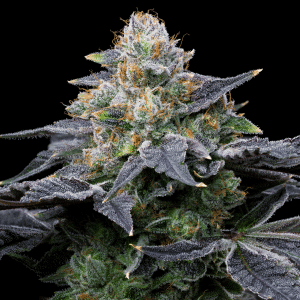
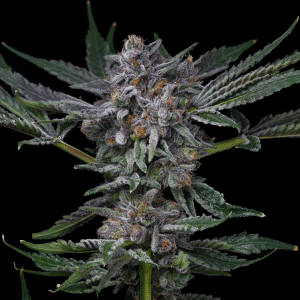
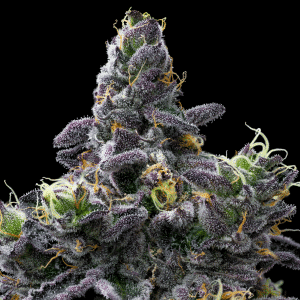
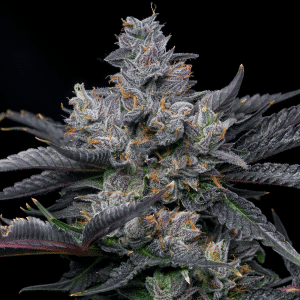
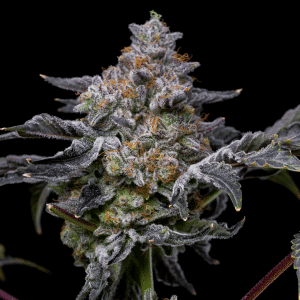
Offers
This product is not for use by or sale to persons under the age of 18. This product should be used only as directed on the label. It should not be used if you are pregnant or nursing. Consult with a physician before use if you have a serious medical condition or use prescription medications. A doctor’s advice should be sought before using any hemp products. All trademarks and copyrights are property of their respective owners and not affiliated with nor do they endorse this product. These statements have not been evaluated by the FDA. This product is not intended to diagnose, treat, cure or prevent any disease. By using this site you agree to follow the Privacy Policy and all Terms & Conditions printed on this site. All products contain less than 0.3% Cannabinoid-compliant with applicable Federal Laws. Please make yourself aware of any and all applicable laws regarding hemp in your jurisdiction. Premium Cultivars accepts no liability or responsibility regarding germination laws in any specific locale state or national jurisdictions.THCA products are not available for shipment to the following states: Hawaii, Idaho, Minnesota, Oregon, Rhode Island, Utah, Vermont *Note: Products with Total THC content above 0.3% must not be shipped to these states.
We want to help you get your hands on the seeds you want, take 20% off your next purchase when you enter your email below!
We want to help you get your hands on the seeds you want, take 20% off your next purchase when you enter your email below!